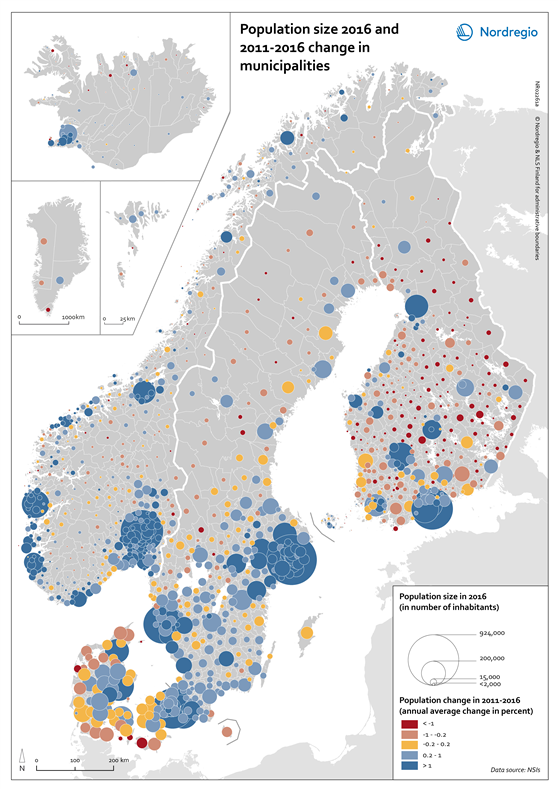This map shows the population size in number of inhabitants in 2016, and the population change between 2011 and 2016 in the Nordic municipalities.
The circles indicate the population size in 2016, with large circles representing high number of municipal population; small circles representing low number of municipal population. The blue tones indicate increasing population, the red tones indicate decreasing population, and the yellow colour indicate stable population growth between 2011 and 2016.
The population of the Nordic Region has grown by almost 4% during the period 2011–2016; more in Norway and less in Denmark and Finland. This growth is unequally distributed within and between the various Nordic countries.
Between 2011 and 2016, population growth at the Nordic municipal level has been most intense in and around the larger regions of Stockholm and Oslo and around the larger cities on Norway’s western coastline. The Greater Copenhagen, Gothenburg, Helsinki and Reykjavík areas have also grown in terms of population. There has also been significant population growth in most municipalities within the larger functional urban areas though some municipalities outside these areas have also grown significantly, including Bodø, Växjö, Jyväskylä and Horsens as well as in a few smaller municipalities. The general pattern however seems to be that small inland municipalities with already small populations have declined further, particularly in Finland, but also in Sweden and Norway. In Denmark, municipalities with shrinking populations are primarily found along the west coast of Jylland but also in Sjælland.

